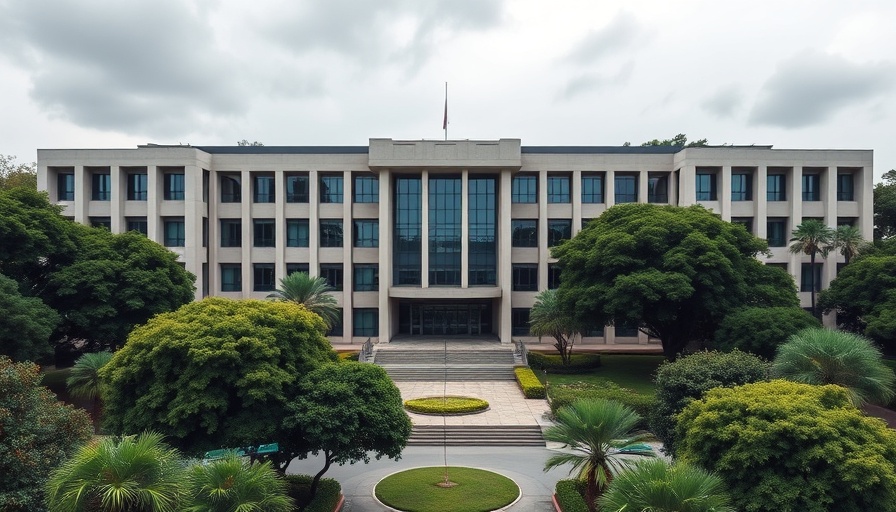
A Game-Changer for Bridge Safety: Robotic Inspection Technology
In a world that demands efficiency and precision, the latest advancement in bridge maintenance could significantly enhance public safety. The American Society of Civil Engineers (ASCE) recently honored an innovative robotic inspection system with the prestigious 2025 Charles Pankow Award for Innovation. This system, known as the Bridge Inspection Robot Deployment System (BIRDs), was developed by Genda Chen, a professor at Missouri University of Science and Technology, and has the potential to transform how we monitor and maintain our infrastructure.
How Does BIRDs Work?
BIRDs utilizes three drones each serving a distinct purpose to ensure thorough inspection coverage. The first drone not only flies but can also crawl on various bridge components. Equipped with infrared cameras and LiDAR, it captures vital data regarding the structure’s health. The second drone operates a small, bicycle-like crawler, enabling it to inspect the hidden steel components closely, armed with a microscope and crack probe to identify vulnerabilities.
The third drone takes a more hands-on approach, equipped with a manipulator designed for maintenance tasks, including crucial defect testing on concrete. This multi-drone system is indicative of a major shift in the way bridge structures are examined—moving from labor-intensive manual inspections to smart, automated technologies.
The Importance of Precise Inspections
As previous studies have shown, the nuances of bridge maintenance are often overlooked. Traditional inspection techniques generally rely on visual checks that can miss internal or minor cracks that escalate over time. For instance, orthotropic steel bridges are prone to fatigue cracking, a dangerous issue if not detected early. Thus, the incorporation of such advanced robotics in bridge inspections enhances the reliability and accuracy of identifying potential hazards.
Future Opportunities for Innovation
Looking ahead, the BIRDs project will evolve, with plans to refine the technology and work alongside agencies and companies for broader adoption. This phase will be essential as more structures age, calling for innovative inspection strategies to ensure safety and longevity. Chen's team received over $1 million in funding from the U.S. Department of Transportation's University Transportation Centers Program, which further highlights the significance of this technology in contemporary urban planning and maintenance.
The Broader Implications of Robotic Inspection Technology
This revolutionary platform holds promise beyond bridge inspections. The basic principles of BIRDs can be adapted for various infrastructure concerns, from tunnels to pipelines, potentially reshaping infrastructure management across sectors. By fostering continuous monitoring through automated systems, it's possible to predict maintenance needs before they escalate into costly repairs or safety issues, providing cities with smarter and more sustainable operational solutions.
Local Perspectives: Why this Matters to Homeowners in Worcester
For homeowners in Worcester and surrounding areas, the implications of this technology extend beyond bridges. As the infrastructure surrounding communities evolves, the safety and reliability of highway systems, local bridges, and transit routes become paramount in preserving property values and ensuring quality of life. The advent of robotic inspection services reflects a broader trend toward the adoption of technologies that can enhance public safety. Homeowners considering renovations or improvements will benefit from understanding the potential impacts infrastructure developments can have on local property conditions.
Final Thoughts: Embracing Innovation
Robotic inspections represent a paradigm shift in our approach to maintaining vital infrastructure. With new technologies reshaping how we think about safety and efficiency, it’s crucial that homeowners, contractors, and policymakers stay informed about these advancements. By understanding these innovations, individuals can ensure the longevity and safety of both personal and communal investments.
As we embrace the future of infrastructure management, consider reaching out to local contractors for your home projects. From routine repairs to complete remodels, partnering with skilled professionals can help ensure your home responds well to changing infrastructure and safety standards.
 Add Row
Add Row  Add
Add 




 Add Row
Add Row  Add
Add 

Write A Comment